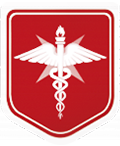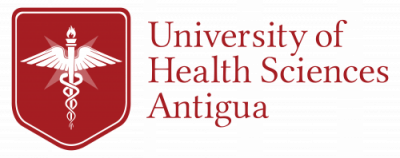No Pulse! Shock Recommended!
The patient wasn’t breathing, and I couldn’t find a pulse!
My hands shook as I used my EMS shears to cut through his shirt so that I could apply the automated electronic defibrillator (AED) pads to his chest and push the analyze button.
“Shock Recommended!” stated the electronic voice. I pushed the shock button and waited as the crowd around me continued to grow.
“Analyzing Rhythm. Shock Recommended!” Again, I pushed the shock button and waited.
“Analyzing Rhythm! Rhythm restored, no shock recommended.” I breathed a sigh of relief. Most pre-hospital arrests do not end this well.
The patient had a pulse, and was again breathing. What’s more, I could hear the wail of the ambulance sirens drawing near. Soon the 17-year-old high school football player I had just resuscitated would be in the hands of the advanced cardiac life-support paramedics who would rush him to our level 2 trauma center. He would be in good hands.
I was a young EMT back in those days. Just starting out, and trying to get some experience by volunteering with a small agency that covered high school athletic games.
I would later learn my patient survived. But what I also learned came as a shock. Everyone had wondered how a seemingly healthy young man, a high school athlete, could have suffered an arrest in the midst of a football game. In speaking with the emergency department physicians and hospitalists who treated him, the only risk factor they could identify was a history of consuming large amounts of energy drinks.
The night before the game he had consumed five while undertaking an all-night study session to prep for a geometry exam. Feeling exhausted, he had consumed several more before the big game to give him an extra boost of energy.
Energy drinks: More danger than energy
Students may use energy drinks, such as 5-hour Energy or Monster Energy Drink, to help stay alert as they study for examinations, or even just make it through the day after a long night with friends. However, research suggests that these drinks may offer more danger than energy. Energy drinks contain large amounts of caffeine and other substances which are harmful to the body, including the heart and brain.
The US Food and Drug Administration (FDA) reports a total of thirty-four deaths since 2004 linked to 5-hour Energy, Monster, and Rockstar energy drinks. Between 2005 to 2009, in the United States, energy drink related emergency department visits increased ten-fold. In 2008, there were 16,053 emergency department visits related to energy drinks. About 52% of those who visited emergency departments were aged 18 to 25.
What are the dangers?
Heart Problems
The biggest risk from energy drinks appears to be heart problems. Caffeine can boost heart rate and blood pressure, as well as cause the heart to release calcium, which may lead to arrhythmias (irregular heart beat) and even heart attacks.
Miscarriage
The FDA has received at least one report of a miscarriage linked to consumption of 5-hour Energy. Studies on the effect of high doses of caffeine on miscarriage have been mixed, with one showing a twofold increase in those who consume more than 200 mg of caffeine a day; while others show no link. Still, the American College of Obstetrics and Gynecology advises pregnant women to limit their caffeine consumption to less than 200 mg per day.
Alcohol Addiction
Multiple studies show that combining energy drinks with alcohol, a common practice among college students, can be dangerous. Energy drinks allow students to stay awake longer, and consume more alcohol. A 2011 study found that college students who consume energy drinks with alcohol were 2.5 times more likely to be alcoholics than those who did not.
Drug Abuse
Several studies have shown that energy drink consumption is linked to increased risk of drug abuse. Students may be more likely to experiment with drugs such as marijuana and others while under the stimulating effects of large amounts of caffeine found in energy drinks.
Difficulty Thinking
Using energy drinks to stay up all night and study for exams isn’t the best choice. The high levels of caffeine in energy drinks makes learning and recalling information more difficult on quizzes and exams.
What to Drink Instead
Need a replacement for your afternoon or midnight energy drink? Here’s what I recommend to keep your energy levels up while staying healthy.
Smoothies
Loads of local fruits and veggies can be used to make smoothies, such as bananas, papayas, mangoes, and others. This is a great way to boost your metabolism and get the energy you need while staying healthy.
Green Tea
Much less caffeine than coffee, there are also loads of health benefits, including decreased risk of cancer and heart disease. There’s also some evidence that green tea helps you think more clearly and react quicker – great things for medical students.
Protein Shakes
Protein can help fight fatigue, and your body needs it to be healthy. But if you decide to invest in protein shakes, remember to combine them with some carbohydrates such as fruit or milk, to get the full energy boost you need to succeed! And also remember, there can be too much of a good thing when it comes to large amounts of protein. Remember your biochemistry? What is excessive protein stored as in the body?
Soy Milk
Low in calories, high in protein, calcium, and vitamins, soy milk is a great way to get some much-needed energy, stay hydrated, and get ready for the next patient.
Water
The best energy drink of all – and it’s free. Dehydration can really slow you down in the classroom and beyond. And nothing is better for beating dehydration than plain old water. Add some fruit slices or even a little lemon juice to add flavor and vitamins.
Fruit Juice
A great source of vitamins and nutrients that can keep you moving from the class- room to the clinic. However, fruit juices may contain little fruit and lots of sugar, so read the label. Again with the biochemistry? Yep, remember what excessive amounts of sugar (carbohydrates) are stored as in the body? That’s right, fatty acids!
Want to Save Lives?
I bet you do, or you wouldn’t be reading this blog. In fact, I bet becoming a doctor is a lifelong dream for you. You dream of making a difference in the world, being put into situations where you are the only one who can help. Snap decisions that mean the difference between life and death for those you serve!
And while not every day can be dramatic saves, with grateful patients returned from death’s door, being a physician is one of the most rewarding and respected career paths you can follow.
Join the UHSA Family
If you have a lifelong dream of becoming a physician, then we can help you. UHSA has been creating world-class doctors since 1982. In fact, we are the second oldest private medical school in the Caribbean.
No matter where you are starting from, we have a program that is right for you.
High school graduates, or those who lack premedical courses, should apply to our accelerated premedical program. This intensive course will get your career started fast, and with the fewest distractions.
If you already have the premedical requirements, then our direct entry MD is where you should be. Using integrated teaching that includes cases and clinical vignettes from day one, the curriculum has been designed by an experienced, and global, community of medical educators.
Or maybe you see yourself as a global disease cowboy, working to control diseases like COVID-19, leptospirosis, and others. If that’s the case, then our combined MD/MPH (masters of public health) program is right for you.
UHSA can take your dream and make it a reality! Contact our Admissions Team today!

